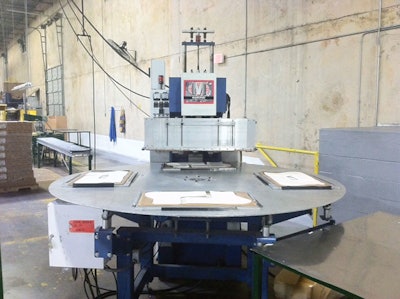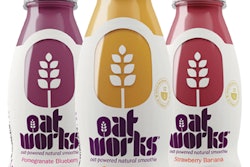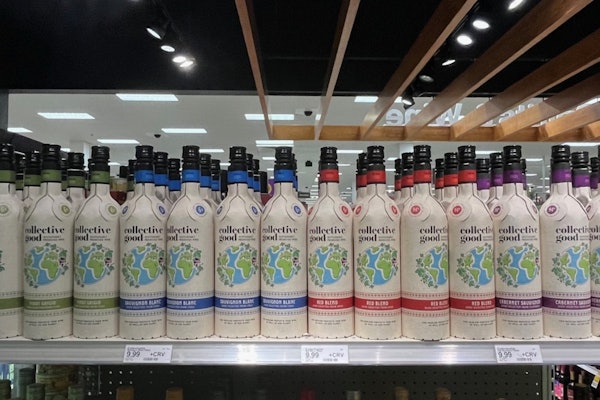“The more the merrier” is an idiom that often describes a good-hearted attempt to add yet one more person to an already crowded venue. Business arrangements among several parties might seem a fitting situation in which to use the old saw. But are they really?
It depends. In the case of three-tier sales agreements, where an equipment supplier provides a machine to a contract packager “through” the co-packer’s customer (a manufacturer or brand-owner), all three parties can indeed come up feeling somewhat merry…or at least smiling.
The key to success, it appears, is knowing who is responsible for what and when, and then trusting each other explicitly to do the best job possible.
“Brand owners tend to sit at the head of the table on most all projects, regardless of whether production will take place internally or at a third- party location,” says Neil Kozarsky, president of Marlton, NJ-based T.H.E.M. (Technical Help in Engineering and Marketing), a contract packager and also sole U.S. supplier and seller of Sanko stick-pack packaging machinery.
“Once the project deliverables are defined,” says Kozarsky, “all parties have to work diligently to align machinery capabilities with requirements and metrics. The economics can be challenging, as CPGs often lean on contract packagers when they are not prepared to fully absorb capital expenses tied to new products. Still, the customer is king or queen and tends to drive the project and make final decisions. It often comes down to the willingness of the contract packager to take on measured risk when new programs are being advanced.”
When a packaging equipment supplier is working a deal which includes both a contract packager and a consumer packaged goods (CPG) company, it is never a black-and-white situation, according to Mike Wilcox, vice president of sales, marketing and aftermarket services at end-of-line machinery supplier Delkor Systems, Arden Hills, MN. Both groups are usually involved in the design and planning, he says, although the contract packagers tend to have final say on how the packaging line is chosen and laid out since they must operate the system once it is installed.
Tom Bacon, president and founder of contract packaging firm Aaron Thomas Inc., says that in his 40 years in business, the CPG or brand owner generally wants to avoid assuming the financial responsibility for investing in equipment. “The CPG is responsible for the design of finished goods only. Sometimes they will recommend equipment, but most often, we choose,” he relates. “We’re taking on the financial responsibility, and they respect that position.”
Enlightened development
Occasionally, three heads are better than one, as Kozarsky explains: “Yes, all three parties have to be fully immersed in the design and development phases, as the success of the project really depends on anticipating most of the challenging elements prior to entering execution mode. There is usually a good deal of establishing what is really the “need” as opposed to the “want” relative to production speeds and timing. Too much optimism or pessimism can be costly, and effective projects require all three parties to be in alignment on critical acceptance requirements.
Lines of communication between the machinery supplier and the contract packager’s production group must be short and narrow, Kozarski insists. “While there are necessarily gray areas in commercial transactions in certain provisions, install, service, parts and preventative maintenance issues have to be narrowly defined. It can get somewhat murkier if the brand owner owns the equipment that is being used for production at the co-pack facility. But, it typically comes down to the machinery company defining install and aftermarket service parameters because we have the most knowledge of the equipment along with associated experience.”
“A good example of a typical project planning challenge is a CPG dictating machine speed requirements prior to the manufacturer conducting tests and validation. Without product and without packaging materials in hand, it’s virtually impossible to peg speed or yields on any machine; yet, program “go/no-go” decisions are often linked to these values,” he says.
Tom Bacon truly trusts their company’s different approach to planning parameters. “When we select the machine’s tooling, with the customer’s approval and with final product specs in hand, Bacon says, the machinery choice is clear-cut: “It’s pass or fail.”
Delkor’s Wilcox says that generally the CPG customer determines the scope and production specifications for a packaging line project, but does not always specify the OEM. “The contract packagers have to come up with the packaging equipment that will meet those specifications and be within the budget parameters set by the brand owners. The contract packagers often have to fit the new equipment into existing facilities, so they should play a leading role in the machinery planning process.”
He explains: “Usually in a three-tier sale, the packaging equipment will be dedicated to a single type of product. However, that product may be offered in several types of packaging, depending on the retail channels through which it is sold. Therefore, the equipment’s flexibility to handle multiple sizes and types of packaging may become a critical factor in the purchase decision.”
Lead time can be a major consideration in a three-tier sale, Wilcox points out. Packaging lines often are developed later in the process of launching a new product, which can put intense pressure on a supplier to produce a workable proposal and then build, deliver and install the packaging equipment. At this point, CPGs want to speed their products to market, he says.
Risky business?
Does a project ever fall apart on the drawing board, before any real work can even be considered? The machinery companies say this hasn’t happened to them. Or at T.H.E.M., says Kozarsky: “Frankly, that at T.H.E.M. since we’ve been in the machinery supply or contract packaging businesses.
“I would suggest,” he adds, “in instances where this has occurred, the problem was not a lack of available data at the front end. Rather, a project team can be blind-sided by a factor or issue that failed to appear on anyone’s radar screen when planning and design was being conducted. Likely suspects include barrier/shelf-life requirements, cost of a key material or process, or a secondary packaging requirement wherein the downstream equipment is difficult to integrate with the primary filler.”
Wilcox, who has managed sales at Delkor and Bosch Packaging, said he has never had a three-tier sale break down due to sheer rancor between parties. “By the time they get that far along, about the only thing that will stop a sale is if the packager is not awarded the contract by the CPG. It’s amazing how much work packagers and equipment suppliers can go through on a speculative project.”
T.H.E.M.’s Kozarski fully agrees that the contract packager assumes the lion’s share of risk in any project. “If the CP has existing business with the brand owner, there is an unspoken or outright expectation more risk can be assumed by the CP. It often comes down to exactly what is required to deliver the goods for the brand owner, and how much of that is just for the project and not for other customers right away or downstream. What really complicates matters is when the brand owner starts talking about ‘exclusivity.’ Our comment at that stage is, ‘let’s talk about something less controversial, like religion or politics!’”
And yes, a good sense of humor always helps.




























